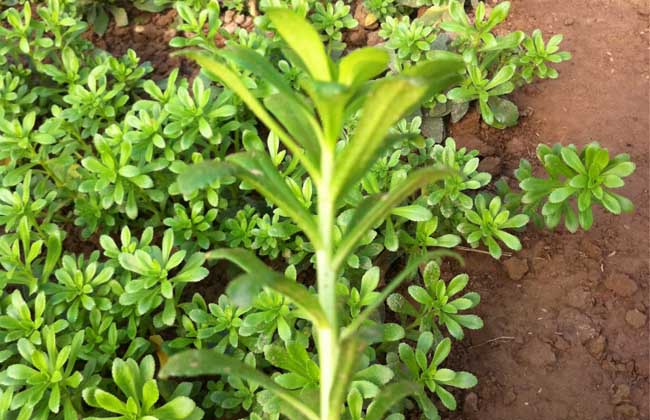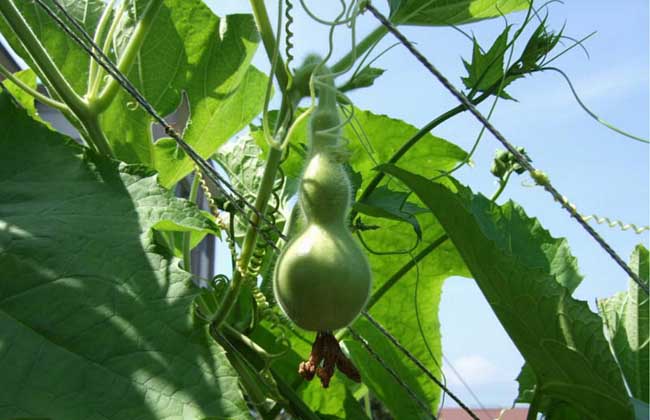Planting techniques of organic cauliflower

Cauliflower, also known as cauliflower, etc., is a variety of Brassica campestris in the cruciferous family, native to the Mediterranean coast, with a white flower head similar to that of broccoli. Its product organs are white, shortened, fat and tender buds, branches, rachis and so on. Let's take a look at the planting techniques of organic cauliflower.
Planting conditions of organic cauliflower
Cauliflower has developed root system and strong regeneration ability, so it is suitable for seedling raising and transplanting. It is easy to suffer frost injury below 0 ℃, but it is difficult to form a flower ball above 25 ℃. The growth of foliage and bolting and flowering require warmth, and the optimum temperature is 20-25 ℃. The formation of the bouquet goes through the stage of vernalization at low temperature. The requirement of light condition is not strict, but the requirement of water content is relatively strict, which is neither waterlogging nor drought resistant. It has strong adaptability to soil, but the sandy loam with high organic matter and deep soil layer is the best. The suitable soil pH is 5.5-6.6. It has strong salt tolerance and can still grow normally in the soil with a salt content of 0.3% to 0.5%.
Seedling raising techniques of organic cauliflower
1. Planting time: cauliflower is mostly planted in spring and autumn every year. Most areas of North China are very suitable for people to grow organic cauliflower in autumn. When planting in autumn, it can be sown in mid-July and fixed in August. Can be harvested in late October and early November. If you choose to plant in spring, you should sow at the end of January, plant at the end of March, and harvest at the end of May and early June.
2. Seed treatment: seed disinfection is a more economical and effective method to prevent cauliflower diseases and insect pests. Natural substance disinfection and warm soup seed soaking technology are used to treat seeds. Natural substances can be soaked in 300 times potassium permanganate solution for 2 hours, wood vinegar solution 200 times solution for 3 hours, lime water 100 times solution for 1 hour or copper sulfate 100 times solution for 1 hour, and seeds were soaked in warm soup for 4 hours after disinfection.
3. Seedbed disinfection: physical or natural substances are generally selected for soil disinfection in organic cauliflower plantations. Soil disinfection materials can be sprayed and disinfected with 3-5 Baume stone-sulfur mixture, 100-fold solution of crystal stone-sulfur mixture, 30 kilograms of quicklime or 100 times of potassium permanganate and 50 times of wood vinegar.
4. Cultivate strong seedlings: in autumn, rain-proof shade shed can be used to sow and raise seedlings, first allocate nutritious soil, pour the seedling bed into water, sow or sow seeds on demand, cover soil and cover with plastic film, 20-25 grams of seeds per mu and 4-5 square meters of seedling bed. Keep the border moist after emergence, pay attention to rain prevention, weeding and inter-seedling. When the seedlings are weak, 30% biogas slurry can be applied for 2 or 3 times. The seedlings can be raised in the sunny bed in spring. From sowing to before emergence, the seedling bed is not ventilated, about 25 ℃ in the day and 15 ℃ at night. The seedlings are properly ventilated after emergence, 20: 25 ℃ in the daytime and 10: 15 ℃ at night, and seedling exercise is carried out one week before planting.
Planting techniques of organic cauliflower
1. Land preparation and planting: 5000 kg of fully mature organic fertilizer is applied per mu, and deep ploughing, raking and making beds are made. Flat beds are generally planted in North China, with a width of 1.4 to 1.5 meters, with two rows of cauliflower in each row. The plant spacing of early-maturing variety, middle-maturing variety and late-maturing variety is 32-37 cm, 40-45 cm and 50-60 cm. The planting density is small in autumn and high in spring.
2. Temperature management: according to seasonal climate change, room temperature change and cauliflower growth requirements, daily management such as heat preservation, cold protection and ventilation should be carried out, and the time and amount of ventilation should be mastered. During the period from planting to slow seedling, the suitable temperature should be 25 ℃ in daytime and 15-20 ℃ at night. The period from slow seedling to floret growth is the period of leaf cluster growth. The temperature is maintained at 20: 25 ℃ in daytime and 15 ℃ at night. Cool climatic conditions are required in the period of rosette formation. The temperature is 20: 22 ℃ in daytime and 10: 15 ℃ at night.
3. Water and fertilizer management: the principle of water and fertilizer management after cauliflower planting is to promote seedlings in the early stage, to slow seedlings and early plants, to control water and fertilizer in the middle stage, to promote root development, to attack buds in the later stage, and to promote bulb expansion. Generally, there are 3 times of topdressing, the first time at 7-15 days after planting, the second time at 30-40 days after planting, when the plant has 15-17 true leaves, and the third time when the plant is budding. Apply 1000 kg of high-quality organic fertilizer per mu or 25% biogas slurry each time. 30% biogas slurry can be used for foliar topdressing during the period of flower head formation.
4. Moisturizing and pruning: cauliflower should keep the soil moist throughout the growing period, especially during the period of bulb hypertrophy. But cauliflower is also afraid of waterlogging, so pay attention to waterlogging during its growth. Cauliflower is easy to produce side branches, so the side branches should be removed before the main ball is harvested, or when most of the main balls grow to 12-16 cm, 3-4 side branches can be left appropriately. Always remove the dust from the film, keep it clean, improve the light transmittance and ensure the normal growth of cauliflower.
5. Pest control: organic cauliflower will also have some diseases and insect pests during the growth period. If it is not treated in time, the yield will be reduced and the quality of organic cauliflower will be affected. For example, cabbage worm and diamondback moth are common diseases and insect pests when growing organic cauliflower. After occurrence, vegetable farmers should use Bacillus thuringiensis to control them. If aphids appear in organic cauliflower, 1% soap can be used to control them. In addition, in order to reduce the occurrence of diseases and insect pests, the net room cultivation method can also be used when planting organic cauliflower.
6. timely harvest: the harvest time of organic flower ball is relatively strict, and the harvest must be timely and timely. The harvest standard is that the flower ball is fully grown, the surface is orchestrated, the edge is not yet scattered, the flower ball is compact, and the color is thick green. For some varieties after the main ball harvest, the side ball can also be harvested for 4 times.
Related
- A course of planting techniques and methods on how to grow carrots
- How to plant the latest tulips?
- Is it better to pick tea in the morning or in the afternoon? When is the best time for tea to be picked? what is the third or fifth tea?
- Launch Yuanxiao Happy combination Haocha + Tea Yuan healthy Taste
- Penghu Tourism "Fireworks 20 Parade with You"
- 2022 West Lake Happiness holds "Digital Revitalization Voucher" and draws iphone13 and laptop.
- Banqiao Fuzhou social houses are designed to change start-up combined with police elimination to create a safe and livable environment
- The convenient measure of "mechanical weeding" in Xinbei has been abused and the Agriculture Bureau has imposed heavy penalties on the illegal land consolidation.
- Changgeng University Joins Hands with Four Memory Factories to Rescue Memory Talent Shortage
- The list of Taiwan's top 100 MVP managers is listed by the Director-General of the Farmers' Association of Sanxia District.



